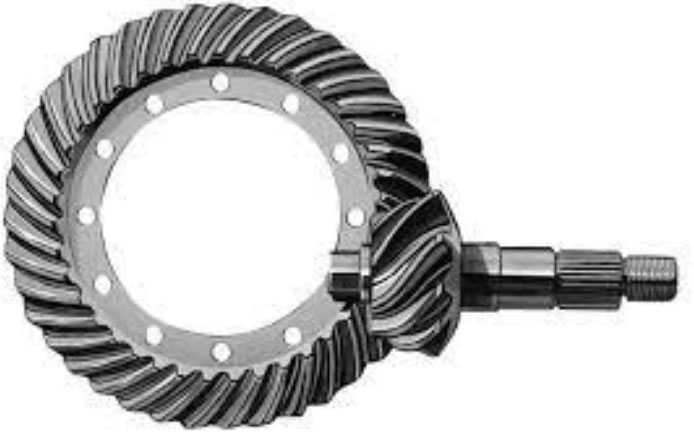
Noise reduction in hypoid gears is essential to enhance operator comfort, improve gear efficiency, and minimize noise pollution in various applications. Hypoid gears, especially when used in automotive differentials, can generate considerable noise during operation due to sliding contact between gear teeth. Here are some effective strategies to reduce noise in hypoid gear drives:
1. Profile Modifications:
- Implementing profile modifications, such as lead crowning, tip relief, or flank modifications, can help improve gear contact patterns and reduce noise during meshing. These modifications ensure smooth and gradual contact, minimizing sudden impacts and vibrations.
2. Gear Tooth Alignment:
- Precisely aligning the pinion and gear teeth during the manufacturing process and gearbox assembly helps maintain proper gear meshing, reducing noise caused by misalignment.
3. Optimal Tooth Contact Pattern:
- Achieving a correct tooth contact pattern is crucial for noise reduction. Utilize advanced simulation tools to analyze and optimize tooth contact patterns, ensuring proper distribution of the load over the gear teeth.
4. Surface Finishing and Grinding:
- High-quality surface finishing and grinding of gear teeth can enhance the smoothness and accuracy of the gear meshing, thereby reducing noise during operation.
5. Lubrication and Cooling:
- Proper lubrication is essential to minimize friction and wear between gear teeth, reducing noise generation. Ensure efficient cooling to prevent overheating, which can lead to increased noise levels.
6. Material Selection and Heat Treatment:
- Selecting high-quality materials with suitable hardness and wear resistance is important for reducing gear wear and noise. Proper heat treatment can further enhance material properties for noise reduction.
7. Noise Absorbing Materials:
- Incorporate noise-absorbing materials or dampening coatings within the gearbox to attenuate noise and vibrations generated during gear operation.
8. Gear Design Optimization:
- Optimize gear design for a higher mechanical efficiency, as lower power losses mean less heat generation and reduced noise.
9. Vibration Analysis:
- Conduct vibration analysis and testing to identify areas of concern and implement appropriate measures to reduce vibrations and noise.
10. Gearbox Enclosure and Sealing:
- Design a robust gearbox enclosure with effective sealing to minimize noise leakage and protect the gears from external contamination.
11. Maintain and Inspect Gearbox:
- Regularly inspect and maintain the gearbox to identify any potential issues or wear that may lead to increased noise levels. Timely maintenance can help prevent noise-related problems.
Implementing noise reduction strategies in the design and manufacturing of hypoid gear drives contributes to enhanced operator comfort, improved gear efficiency, and reduced noise pollution. Noise reduction is particularly crucial in automotive applications, where driver and passenger comfort are essential, and in any environment where noise levels need to be controlled for safety and regulatory compliance.
